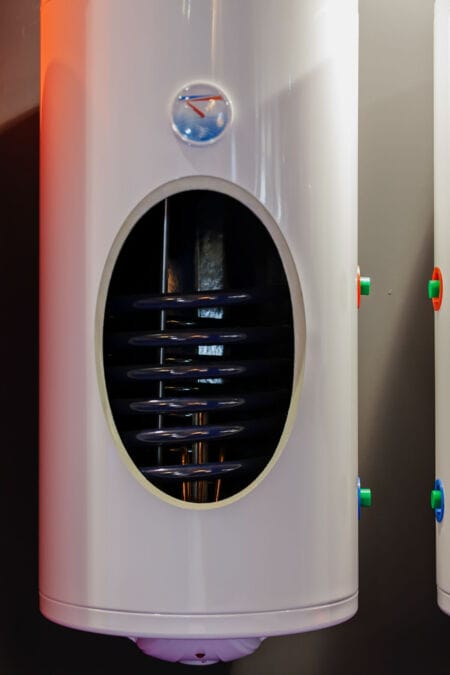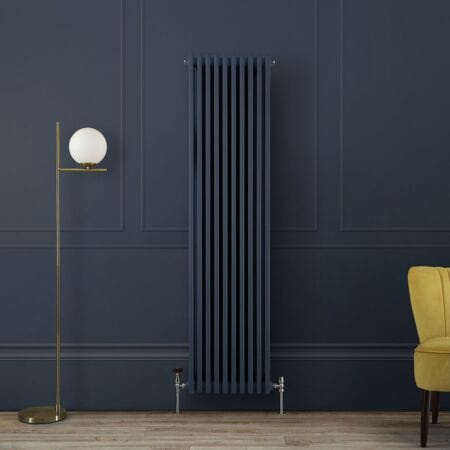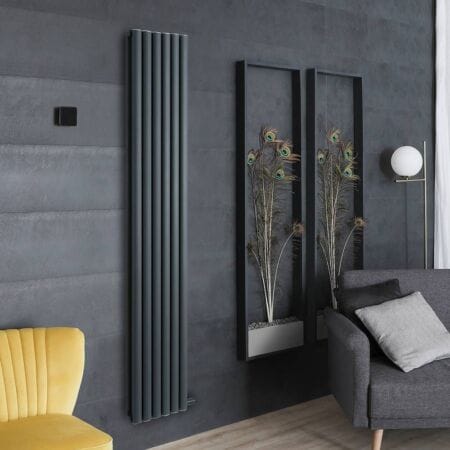Contents
ToggleWhat we'll cover...
A variety of ways to tell you might be due a radiator upgrade, and what you should look for in any potential replacement.
How to tell if you need a radiator refresh
Radiators are one of those things we often take for granted. They hum away in the background, doing their thing like there isn’t anything to it – until one day, they stop working properly, or worse, start leaking mysteriously in the middle of a cold snap.
But long before they completely give up the ghost, radiators can become inefficient, underperforming and increasingly costly to run. If yours have been in place longer than your current sofa – or even your current phone contract – it might be time to ask the question: is it time to replace your old radiators?
Let’s dig into the warning signs, the benefits of upgrading, and why new radiators are a seriously underrated move when it comes to energy efficiency, home comfort and sustainability.
How long do radiators actually last?
There’s no set “expiry date” stamped on your radiator, but the typical lifespan for a standard central heating radiator will typically be between 15 and 25 years, depending on:
- Quality of water and sludge build-up
- Frequency of bleeding or system flushing
- How well balanced your heating system is
- The build quality and material of the radiator itself
If you’re pushing past the 20-year mark and haven’t shown your radiators much love in that time, chances are they won’t be performing anywhere near to their full potential – and this might be reflected by your heating bills.
Signs your radiators are past their best
Not sure if your radiators are ready for retirement? Here are some red flags to watch out for if you’re considering replacing your old radiators:
- Uneven heating
If your radiator is cold at the top, bottom or on one single side – even after bleeding your radiators – it could be clogged with sludge or air, reducing its output and efficiency.
- They take forever to warm up
Older radiators are often slow to respond, meaning your boiler has to work overtime to bring your rooms up to the correct temperature.
- They’re rusting, discoloured or leaking
Corrosion and pinhole leaks are a sure sign that the internal components of your radiators have degraded. Even tiny leaks can cause long-term damage to flooring or décor.
- You’re constantly bleeding them
If you’re venting air every few weeks, your system is trying to tell you something. It’s not working normally, and it’s not working efficiently.
- They just look tired
Let’s be real – if your radiators are dented, chipped or stuck in the “off-white” spectrum of the early 2000s, they’re probably dragging down your room’s aesthetic (and the performance of your heating system).
Modern radiators are engineered to deliver energy efficiency. Whether you’re sticking with central heating or switching to electric radiators that line up with Lot 20 legislation, new designs are better at:
- Distributing heat evenly
- Retaining warmth longer
- Reaching set temperatures faster
- Responding to low flow temperatures (crucial for heat pumps and future-ready homes)
A new double-panel radiator can easily produce more than twice the heat output of an old single-panel radiator unit – without increasing its carbon footprint.
Modern features to look out for:
- Convector fins to increase surface area
- Low water content designs for quicker warm-up
- Aluminium construction for maximum responsiveness
- Smart controls or TRV compatibility for room-by-room optimisation
BestHeating tip: If you’re already running your boiler efficiently but still feel cold, chances are that your radiators – as opposed to your boiler – are letting the system down, and a radiator replacement is due.
Cost vs advantage: Is replacing radiators worth it?
Let’s talk numbers. A new energy efficient designer radiator starts from around £100 to £300, depending on the size, material, and finish of the model. Installation can vary, but in most cases, swapping out and replacing your old radiators in a like-for-like swap is straightforward.
Here’s what you gain:
- Reduced heating bills thanks to faster, more efficient heating
- Decreased boiler wear from lower demand
- More consistent room temperatures
- Enhanced compatibility with smart heating systems
- A fresher, more modern appearance
Payback potential:
If replacing radiators in key rooms shaves even 10–15% off your heating bill, you could recover the cost within two to three winter seasons – especially with current energy prices.
And that’s before factoring in comfort or resale value improvements associated with a radiator upgrade.
The environmental impact: Heating more sustainably
If you’re aiming to make your home greener – but can’t commit to a heat pump or full renewable heating system yet – replacing your old radiators is a fantastic middle ground for sustainable heating.
Why?
- Older radiator designs are heat wasters. The more energy they require, the more fossil fuels are burned (if you’re on a gas system).
- Newer radiators work efficiently at lower temperatures – perfect for modern condensing boilers or heat pumps.
- Electric models paired with green energy tariffs or solar PV can provide a genuine level of low-carbon warmth.
Upgrading just a few radiators can reduce your home’s overall carbon footprint – without digging up your floors or overhauling your entire heating system. All in all, it’s one of the most simple sustainable heating tips to implement.
Form meets function: Radiators that fit your style
Let’s not pretend style doesn’t matter. New radiators don’t just perform better – they look a lot better too.
Gone are the days of chunky white panels or ugly grills. Today’s designs offer:
- Slimline profiles that maximise floor space
- Vertical radiator styles for alcoves, narrow walls or kitchens
- Designer finishes such as black radiators, anthracite radiators, chrome radiators, or coloured radiators
- Traditional column radiators with modern performance
Whether you’re redecorating or just want to clean up your living space, a sleek new radiator replacement can provide the perfect finishing touch.
What about replacing radiators vs flushing radiators?
If you’ve heard that a system flush can solve radiator issues, that’s true – to a point. Flushing removes internal sludge and can enhance performance, but:
- It won’t fix corrosion or poor construction issues
- It won’t increase surface area or heat output levels
- It won’t future-proof your system for smart or low-flow heating
Flushing is a good stopgap – but if your radiators are decades old, replacement is the longer-term win.
Not at all. One of the biggest misconceptions is that you need to go all in and upgrade all radiators, all at once.
Smarter approach:
- Start with your most-used rooms (living room, bedrooms, bathroom)
- Focus on underperforming or visibly tired radiators
- Pair replacements with thermostatic radiator valves (TRVs) or smart valves to maximise efficiency
You can build a modern, high-efficiency heating system room by room – without blowing your budget.
Upgrade your radiators with BestHeating
There’s a point where “good enough” just isn’t good enough anymore. And if your radiators are slow, leaky, or just plain ugly, upgrading them could be one of the smartest, most cost-effective heating improvements you can make, despite the initial outlay.
You’ll heat up your rooms quicker. You’ll expend less energy in doing so. You’ll give your boiler an easier life. And what’s more, you’ll improve how your space looks and feels every day.
So if it is time to say goodbye to those ageing slabs of steel and hello to something better, be sure to explore the full heating collection from BestHeating. And let us know which radiator upgrades you settle on in the comments below, or by reaching out to us through Instagram, Facebook or X.
John is a Research Specialist for the Best Heating Advice Centre, where for over nine years he has dedicated himself to demystifying home heating for our customers. He specialises in creating clear, data-driven guides and how-to articles by collaborating directly with our team of certified heating experts and product engineers.
His work, built on a foundation of journalistic research, has helped millions of readers make confident and informed decisions about their home heating. When he’s not breaking down the heat output differentials from radiators to heated towel rails, John fancies himself as a fine football and music connoisseur.









